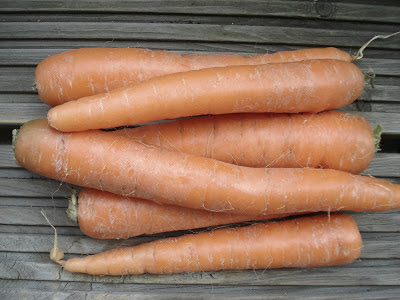Almost, But Not Quite
It’s beginning to feel like spring in South East England, yet just a few weeks ago, it was positively frigid for the UK. It almost felt like a proper winter. I am not currently in the UK though. I missed Old Man Winter, and felt the urge to fly across the pond. He's definitely left his mark in Montreal, but seems to have left the building... Something tells me that Spring is on her way... Although there is little growing in most gardens and fields in the northern hemisphere, there is still a wealth of seasonal produce available at this time of the year. With a few weeks' delay, here are some of the usual suspects to be on the look-out for in February:
Citrus
If you are lucky, you might still be able to get your hands on some Seville oranges to churn out a batch of home-made marmalade, however, February is the month for blood oranges. There are several varieties of blood oranges, all of different sizes and degrees of ‘bloodiness’, so the season extends throughout most of the month. While the peel, rather thicker than that of the navel, is actually suitable for jam-making, the prolonged cooking required for a proper marmalade will mar its beautiful red shade, so it is best suited for quick jams and compotes. Of course, blood oranges make for delicious eating as is: they are sweet and juicy, and tend to be less tart than the more prevalent navel, perfect for those who avoid acidic foods.
Other citrus to keep an eye for are tangerines. Early winter is rife with clementines and mandarin oranges, both of which are tart, little nuggets of health, but late winter seems to harbour the sweeter, milder, somewhat fruitier citrus such as tangerines. Nowadays, the most commonly available varieety is the minneola, sometimes simply labelled as 'tangelo': they're about the size of a tennis ball, and have a noticeable nipple at the stem end (very unlike the navel's button at the blossom end...). Sweet and juicy, they are easy to peel, so are ideal for packed lunches and snacks on the go.
Cabbages and Kales
The fields may be bare at this time of the year, but the store-houses are still full of the autumn harvest. Cabbages are particularly hardy, and are usually available up until the first spring crops. Winter cabbages are tough creatures: while the innermost leaves can be consumed raw, these cold weather vegetables are especially suited for cooking. Unlike the more tender fresh harvest, stored cabbages have several more layers of tough leaves, which are often mistakenly discarded. These outer leaves are ideal for braising, stewing or any other form of cooking that would reduce other greens to a grey sludge.
The pretty little number pictured above is called January King, an English heirloom: although it looks like any old purple cabbage, it is actually a green cabbage -its vivid shade is caused by frigid winter weather. If you don't feel up to long and slow cooking, winter greens should be par-cooked or wilted in a pan before being added to a recipe. They truly are sturdy enough to take the double-cooking. One dish that take advantage of winter cabbage and kale tough nature is bubble and squeak. Although it is usually made with left-overs, it is tasty enough to make fresh.
Jerusalem Artichoke
Although Jerusalem artichokes are more of an autumn vegetables, in places where frost comes early and the ground freezes hard, sunchokes are often left in the ground until the new year. Despite being a true North-American plant, girasoles (meaning 'sunflower' in Italian, and the root of the misnomer 'Jerusalem') like to wait until late September to bloom, and their tubers are quite inedible unless the stalks have died back. Therefore many growers leave off this harvest until the first thaw of the year, which in many cases comes in February. The season can extend well into May, depending on the weather, and only ends when the tubers show sign of waking up for a new year of growth.
Do be forewarned, however, Jerusalem artichokes do not suit everyone! Their starch does not break down into glucose, so they can cause digestive discomfort to some: the best way I've found to get around the problem is to double-cook the tubers. First, boil them like you would a potato, until they are soft enough to mash, but are not reduced to mush, about 20 minutes. Mash the tubers, season with butter or oil, salt and pepper, and cream or milk if desired. Heat through for about 15 minutes. You can also add just enough water, stock or milk to make a silky soup. The chokes' digestibility seems to improve each time you re-heat the mash or soup.
So until the the big thaw, bon app'!
The pretty little number pictured above is called January King, an English heirloom: although it looks like any old purple cabbage, it is actually a green cabbage -its vivid shade is caused by frigid winter weather. If you don't feel up to long and slow cooking, winter greens should be par-cooked or wilted in a pan before being added to a recipe. They truly are sturdy enough to take the double-cooking. One dish that take advantage of winter cabbage and kale tough nature is bubble and squeak. Although it is usually made with left-overs, it is tasty enough to make fresh.
Jerusalem Artichoke
Although Jerusalem artichokes are more of an autumn vegetables, in places where frost comes early and the ground freezes hard, sunchokes are often left in the ground until the new year. Despite being a true North-American plant, girasoles (meaning 'sunflower' in Italian, and the root of the misnomer 'Jerusalem') like to wait until late September to bloom, and their tubers are quite inedible unless the stalks have died back. Therefore many growers leave off this harvest until the first thaw of the year, which in many cases comes in February. The season can extend well into May, depending on the weather, and only ends when the tubers show sign of waking up for a new year of growth.
Do be forewarned, however, Jerusalem artichokes do not suit everyone! Their starch does not break down into glucose, so they can cause digestive discomfort to some: the best way I've found to get around the problem is to double-cook the tubers. First, boil them like you would a potato, until they are soft enough to mash, but are not reduced to mush, about 20 minutes. Mash the tubers, season with butter or oil, salt and pepper, and cream or milk if desired. Heat through for about 15 minutes. You can also add just enough water, stock or milk to make a silky soup. The chokes' digestibility seems to improve each time you re-heat the mash or soup.
So until the the big thaw, bon app'!




Thanks for the information. I really learned a lot.
ReplyDeletecamping trailer